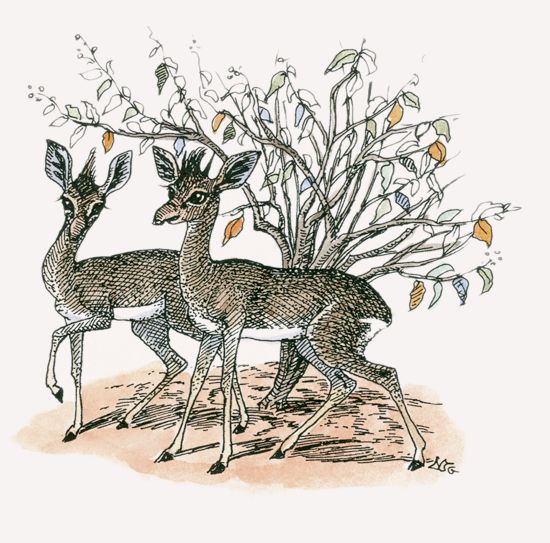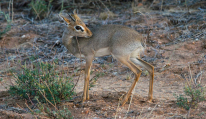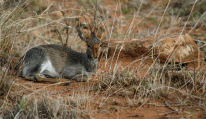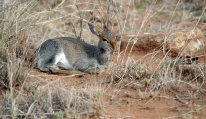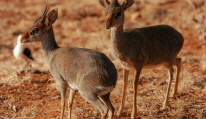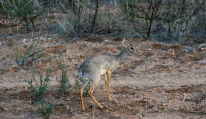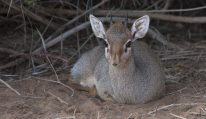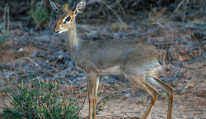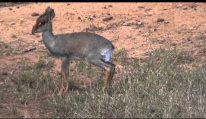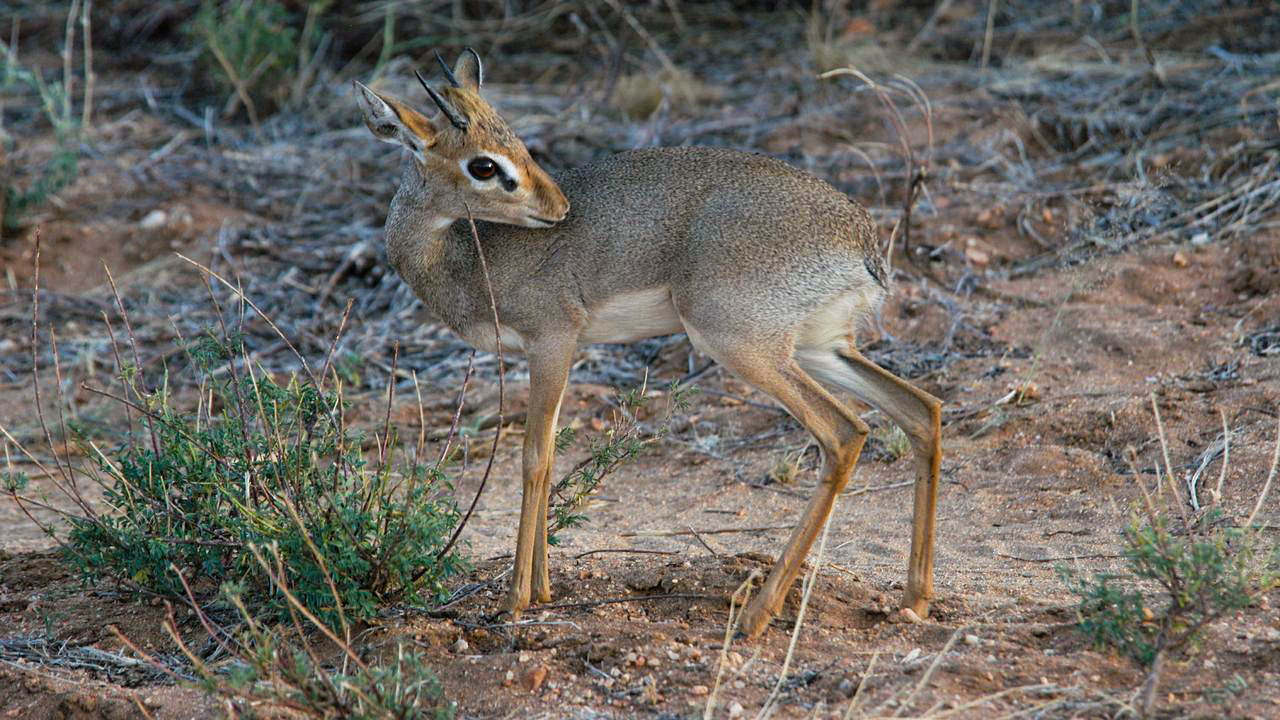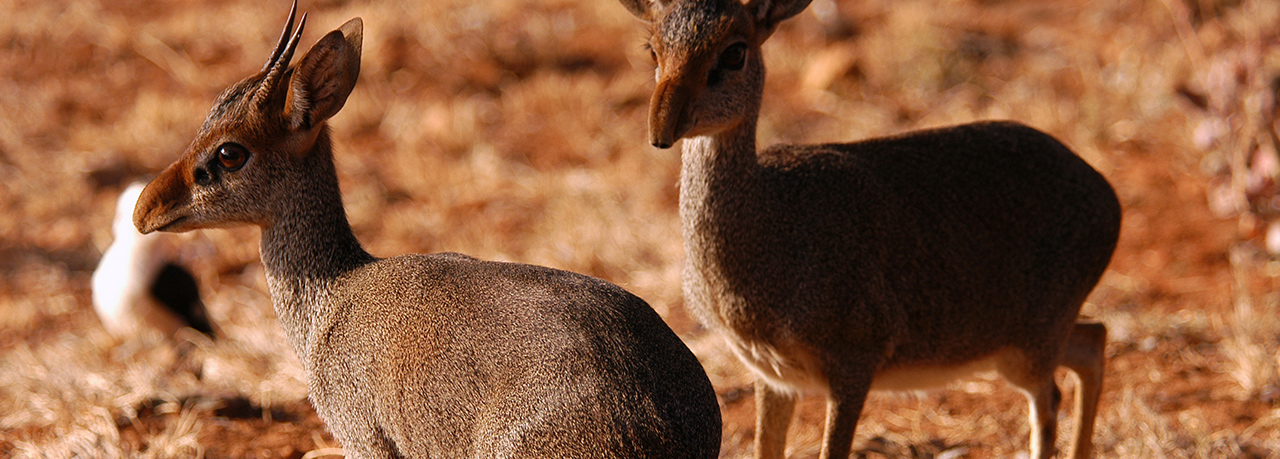Social Structure
Dik-diks maintain their territory with a single partner and sustain this pair bond faithfully until one of them dies. Female dik-diks are larger than males, so within the monogamous pair, it is the female that leads the male, establishing both where they go and what they do. The pair’s most recent offspring, and occasionally an older one, remain with the pair for some time. Dik-diks only gather in groups during the dry season, when food is limited to specific areas.
Communication
Dik-diks communicate with a handful of calls. When they’re excited or scared, they make a whistling hiss.
Behavior
Dik-diks are territorial and mark their boundaries with dung and scent. Fights, particularly among neighboring males, occur along these boundaries, although they are mostly ceremonial and rarely involve actual physical contact. Females defend their regions as well, behavior that is very rare in female antelopes. Not having to worry about water allows dik-diks to live in small territories that remain stable and constant for many years. This gives them an advantage over predators, as dik-diks can use their intimate knowledge of their territories and their speed to escape attack. Due to the extreme heat, dik-diks are most active in the early morning and in the evening; they spend the heat of the day resting in the shade. During the day, they stay within their territories; at night, pairs may venture out to find food. Grazing during the coolest parts of the day allows dik-diks to eat leaves when they contain the highest possible amount of water. Because they can extract all the water their bodies need from these water-plump plants, they do not need access to other water sources. When they do drink, which is rare, they lap water like a cat.
Conservation
Because of their ability to eat a wide variety of plants, dik-diks are not so vulnerable to vegetation and habitat changes caused by increased human activity. In fact, these changes can sometimes benefit them.

